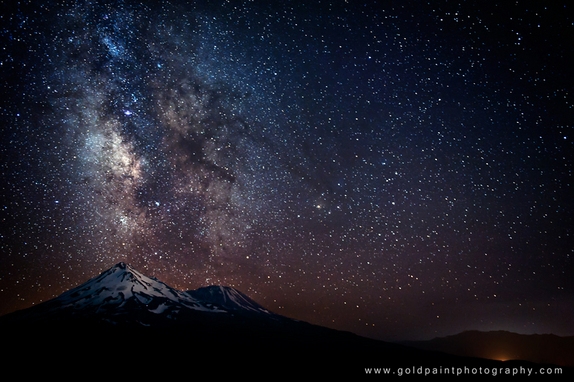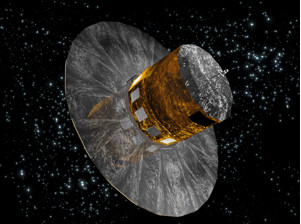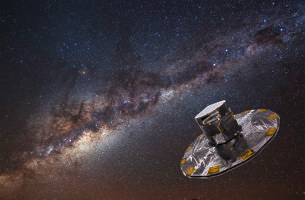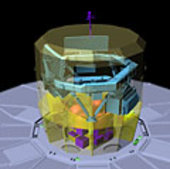Our galaxy is the Milky Way. Apart from our star the Sun, there are billions of others stars in this galaxy. If we could understand how these stars formed, evolved and behave, we could know more about how our galaxy formed and evolved to what it is today.
One of the most ambitious missions to study and understand our galaxy is the GAIA space observatory, which is expected to lead to the discovery of extra-solar planets, brown dwarfs, star-forming nebulae and other celestial objects. Here are the most interesting facts about this mission.
A Photo of the Milky Way Taken Over Mount Shasta in California Photo Source
What is GAIA?
GAIA is a global space astronometry mission by the European Space Agency (ESA) set to commence in late 2013. It is named after the Greek goddess of the Earth but GAIA was also an acronym for Global Astronometric Interferometer for Astrophysics.
GAIA’s purpose is to reveal the composition, formation and evolution of our galaxy. It will chart a 3D map of the Milky Way galaxy and survey more than a billion stars.
The mission was first proposed in 1993 by Lennart Lindegren and Michael Perryman in response to a call for mission proposals for the Horizon 2000 Scientific Program. In 2000, the ESA science program committee made it the sixth cornerstone mission in the program.
The first person to plot the position of stars was Hipparcos, a Greek astronomer. In 1989, ESA launched the Hipparcos Satellite, named after him. The satellite operated for four years during which it plotted the position of a 100,000 nearby stars with unparalleled precision while orbiting around the Earth.
Now, ESA has sets its sight higher with the GAIA mission. It is the most ambitious mission in the history of astrometric measurements.
An Artist Impression of the GAIA Satellite Image Source
What Will The GAIA Mission Accomplish?
The GAIA satellite will measure the positional and radial velocity of more than one billion stars in our galaxy with an accuracy that has not been achieved before. This is just 1% of the stars in our galaxy but the results will enable scientists to develop a 3D chart of the Milky Way galaxy and determine the positions, brightness and movement of stars in our galaxy with extraordinary precision.
The satellite will also find out the rate at which the stars are approaching or moving away from Earth by studying the amount of redshift or blueshift of their light. This will enable astronomers determine the true ages, mass, luminosity and other properties of the stars and enable them to test and refine general relativity and cosmological theories.
It will also detect small variations in the brightness and positions of stars. These changes could indicate the presence of extra-solar planets passing in front of the star blocking its light or pulling on the star as they orbit. Scientists estimate that about 15,000 exo-planets may be discovered this way.
GAIA will also explore objects closer to Earth. Astronomers expect the instruments on the spacecraft to detect up to a million asteroids and Kuiper Belt Objects as they survey the sky.
The aim of all these activities is to help us understand more about how our galaxy formed and evolved.
GAIA Will Map About a Billion Stars in Our Galaxy Image Source
The GAIA Spacecraft
The GAIA spacecraft is equipped with twin 1.7m diameter telescopes to provide two observing directions. This is the largest digital camera ever deployed in space and its powerful photometric detectors will be able to measure the brightness of the stars with an accuracy of up to 18 wavebands.
Within the satellite is an astrometry instrument known as ASTRO that will measure the angular position of stars of magnitude 5.7 to 20.
Another instrument onboard is the Radial Velocity Spectrometer (RVS). Its work is to determine the velocity of celestial objects along the line of sight.
There are other photometric instruments in the spacecraft that will acquire the spectra of stars, determine their stellar properties and study other objects in space.
A Transparent Photo of the GAIA Spacecraft Image Source
The GAIA Satellite Launch
The GAIA satellite is scheduled to launch in late 2013. It will be launched aboard a Soyuz Fregat launch vehicle from the European spaceport in French Guiana.
It will settle at the L2 Langrangian point, which is a stable position in space because of the balanced gravitational pull of the Sun and Earth. From here, it will start its mission to map the Milky Way galaxy and survey more than a billion stars. The mission is expected to last for five years.
How Will GAIA Accomplish Its Ambitious Mission?
The GAIA Satellite will be equipped with instruments that will measure the stellar parallax, which is the apparent angular movement of a star in the sky when observed from opposite sides of the Earth’s orbit around the sun.
Because it will perch at the most stable position in space where there are no distortions from the Earth’s atmosphere, it will be able to achieve a high level of accuracy of up to 10 microarcseconds or about 3 billionths of a degree. This level of accuracy has never been achieved before.
With this high level of accuracy, astronomers will be able to come up with the most detailed 3D map showing the distribution of stars in our galaxy.




